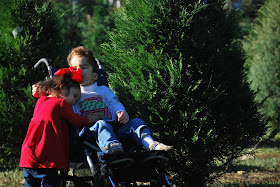If it hasn’t happened yet, it will. There will be one day when your child is introduced to a child in a wheelchair, a child with leg braces, or a child that is nonverbal. They will definitely be curious. Guess what – that is ok; great actually. Here is your chance to teach your child the wonderful and necessary lesson of acceptance and empathy.
At first you might be embarrassed, especially if your child screams “What’s wrong with that kid?” Take that opportunity to teach there is nothing WRONG with any child. Trust me, parents of children with special needs have heard it all. An innocent child asking that question is not the first or last time they will hear that, but it may be the first time (but hopefully not the last time) they hear a parent correct their child for using the term WRONG and teaching their child the importance of knowledge and relationships. You might be nervous or unsure of what to say, but saying nothing at all is even worse.
Here are a few suggestions that might help you if you are caught off guard by your child’s natural curiosity:
Language
Use age appropriate but specific language. For a very little one, the simple answer of “God created us differently and God doesn’t make mistakes” might suffice. An older kid might need a more detailed explanation. If you don’t know the child, ask the parent or child specific questions along with an explanation with why you are curious. “Why is it difficult for your child/you to ….? What are some of you/ your child’s favorite things to do?” This way you can explain that some things may be difficult, but in many other ways this child is exactly like your child.
Greetings
Children’s curiosity is innocent. If your child is staring, don’t tell them not to stare and abandon the conversation. In doing this, you are choosing to ignore a child. Just because someone appears to be unaware of social situations does not mean they are. It can be just as hurtful to ignore as it is to stare or indicate that something is wrong with another child. Have your child say hello and introduce themselves to the child not just the parents.
Empathy
Focusing on details and facts will help promote understanding not pity. Help your child relate on a personal level by asking what things are difficult in their own lives. Having your child realize that things are difficult for them too can create awareness that everyone has challenges. This is a hard one, but try to keep a positive persona when discussing differences because you don’t want your child to start feeling SAD for their new friend.
Lead by example. Get involved. Volunteer for events here and here and here that encourage awareness, inclusion, and acceptance. Register for local fun runs with a variety of organizations. Research and discuss inspiring stories on the internet like this one. Participate in fundraisers.
People First
Always use the people first terminology, but more importantly this child is a child of God not a disability or syndrome or a deleted chromosome. Make your child SEE the person not the differences.
I have to insert a personal story here… My daughter recently saw a girl at Izzo’s who was bald. We were on our way out so I didn’t even pay attention to people standing in line. As we were leaving, Avery asked “Why doesn’t that girl have hair. (Way to go baby. You asked a specific question.) I said, “Well she may have Cancer or Alopecia (I then explained what that was).” Her response, “Her dress was beautiful.” I really was proud of her for seeing that beautiful little girl.




















As a single dad of a daughter with exceptional disabilities, I really appreciate your post. Good points, and love the call to action to get involved and volunteer and to wrap it up with people first language! Kudos!
Thanks for the encouraging words. I really strive to teach my children the importance of involvement. Also, so glad to see Dads reading the blog too’